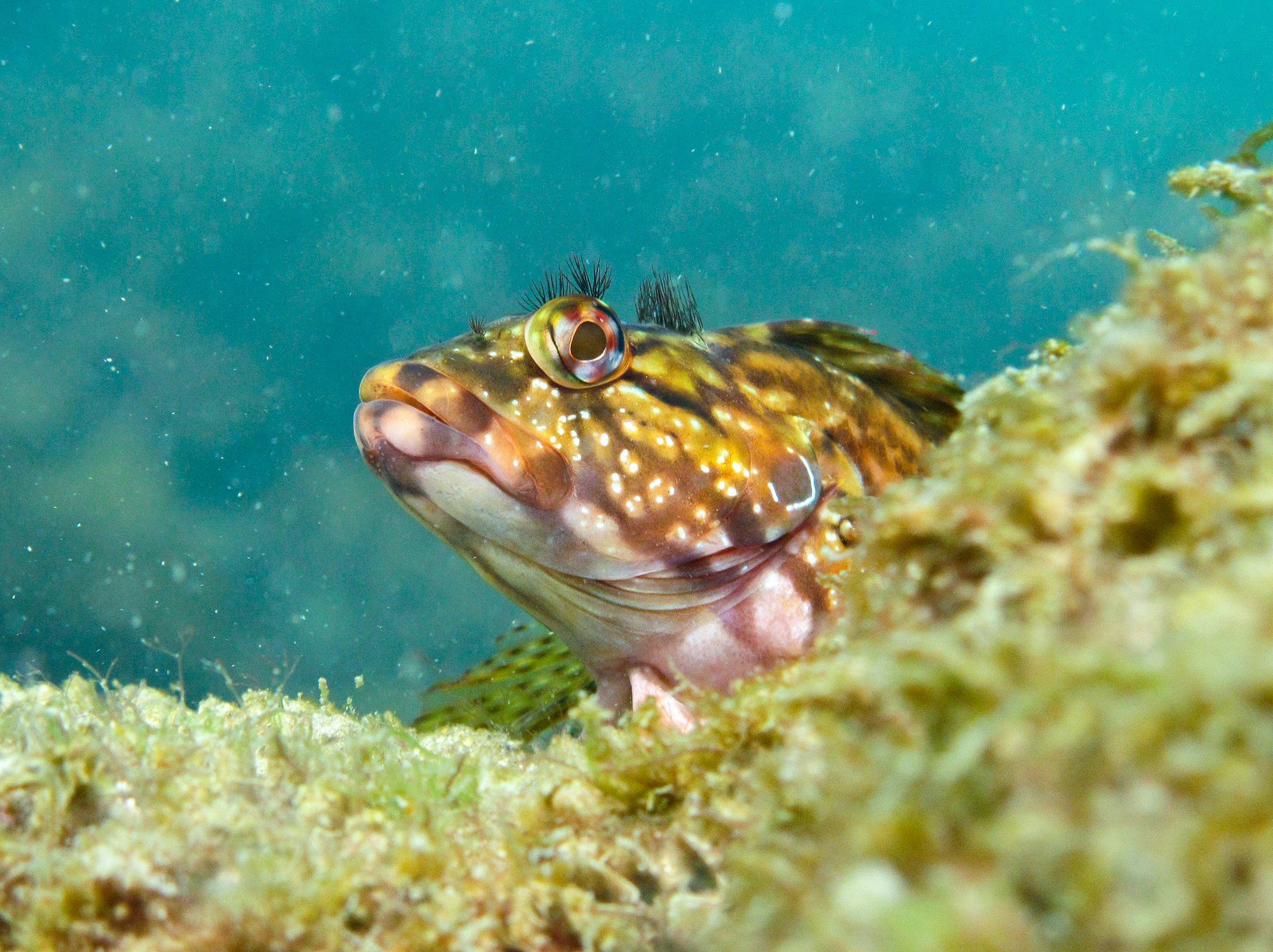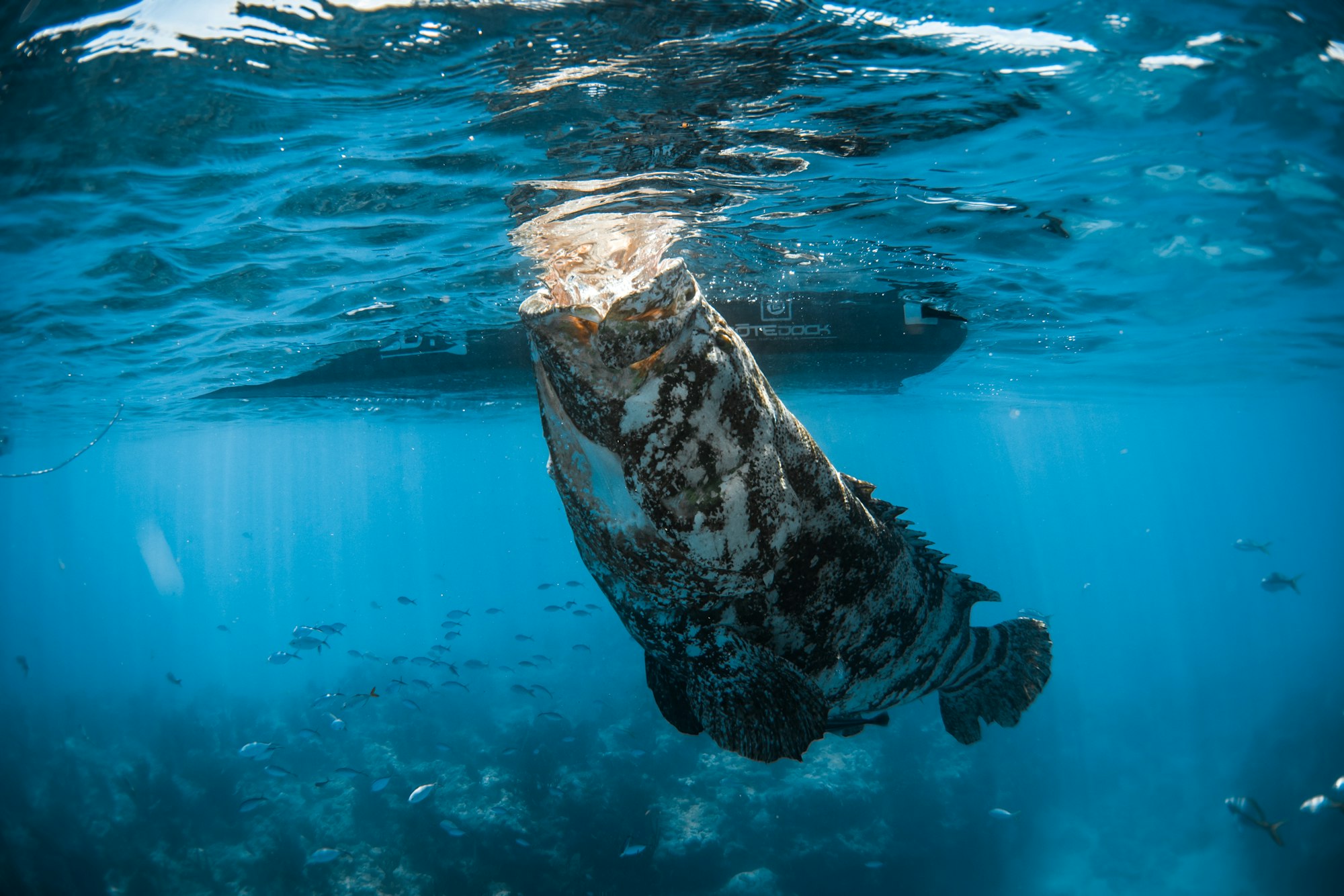Part Two: The Secret Lives of Sebastian Inlet's Fish

Resident reef fish
Part two of a series
“Biology is based on history. Biology is a historical science. Evolution is history. Sebastian Inlet plays a major role in the history of the lagoon and what the lagoon is.” — Dr. Grant Gilmore, world-renowned biologist and senior research scientist
Over the course of its 104-year history, the Sebastian Inlet District has continually improved its north and south jetties to fulfill its obligation of providing safe navigation between the Atlantic Ocean and the Indian River Lagoon.
The jetties and the 3,120-foot-long inlet channel are armored with granite and coquina rocks as a safeguard from the erosional forces of shifting tides and crashing waves. The very presence of the inlet and the evolution of its manmade structures has shaped its vibrant fish habitat that would otherwise be a continuation of unbroken coastline.
In this second installment of our Sebastian Inlet fish series, world-renowned biologist Dr. Grant Gilmore offers insights into what he calls “resident reef fish” that spend their entire lives in the jetties and other rock structures in and around the inlet.
While some fish species use the inlet as a passageway from the Atlantic Ocean to spawn or temporarily live in the Indian River Lagoon (see Part One), resident reef fish are the locals of the inlet. Members of this group lurking among the inlet’s rocks and structures are normally found offshore, Gilmore says.
“This group includes blennies, damselfish, grunts and snappers,” he says. “It’s a rich and diverse fauna, but often overlooked by anglers because these fish don’t necessarily take the bait.”

It’s ironic, to be sure. The fish dwell amongst the rocks where hundreds of anglers cast lines from the jetties above, but these finned denizens are the least likely to be hooked.
“The Hairy Blenny (Labrisomus nuchipinnis), a predaceous little bait-stealer numerically dominates this group,” Gilmore says. “Believe it or not, you will never see this stenothermic tropical species on Gulf coast jetties. Over there, it is replaced by the belted sandfish (Serranus subligarius).”

The most impressive fish of these reef dwellers can’t be kept without a special permit awarded by a random-draw lottery.
“One of the most obvious and interesting reef fish in the inlet is the Goliath grouper, Gilmore says. “They are usually fairly residential except during a full moon in August or September when they migrate offshore to spawn. They have resided in ocean inlets around Florida forever.”
Gilmore, a Florida native, has known these enormous fish most of his life.
“I swam with them as a youngster in Big Pass in Sarasota and most kids growing up in Florida who put their heads underwater in an inlet saw them. They eat mostly crustaceans, like lobsters and crabs, but also many kinds of fish that can be ambushed as they swim through the inlet. They can reach 400 to 500 pounds, about six feet in length, but are harmless. I rubbed the stomach of one hiding under a ledge years ago. Must have put him to sleep.”
Anglers complain about goliath groupers stealing their snook catch, Gilmore says: “Why they are doing this today is a mystery. Maybe there is a food problem. Could be in that we lost so much seagrass by using herbicides and polluting the water.”
Gilmore’s concerns about declining water quality in the Indian River Lagoon resonate with Sebastian Inlet District Commissioner Lisa Frazier, whose 30 years in planning and project management includes local government and environmental planning.
“Our waterways need our help,” Frazier says. “I’m proud of the projects that our small special district has quietly accomplished over the years. The armoring of the shoreline to protect the inlet channel from shoreline erosion, and decreasing turbidity in the water, has also created but has also created additional habitat for fish and other marine life.”
In the next installment, we’ll examine the fish group that Gilmore calls “estuarine feeders", fish that use Sebastian inlet to feed in the Indian River Lagoon. This group includes bluefish, pompano and various jacks.
Who we are: Created as an independent special taxing district in 1919 by special act of the Florida State Legislature, the Sebastian Inlet District was chartered to maintain the navigational channel between the Atlantic Ocean and the Indian River. The Sebastian Inlet District is responsible for bypassing sand that migrates into the inlet system to downdrift beaches per the Florida Beach & Shore Preservation Act, and conducts periodic dredging, channel maintenance, sand bypass and beach renourishment projects. Other critical functions include erosion control, emergency beach and dune repair, shoreline stabilization and inlet infrastructure maintenance, public safety in navigation, and environmental monitoring and protection. The Sebastian Inlet District routinely works with marine scientists to conduct biological monitoring of the critically important habitats surrounding the inlet that support a broad range of different species.
Posted August 14, 2023
- By Ed Garland
Public Information Associate
Sebastian Inlet District

